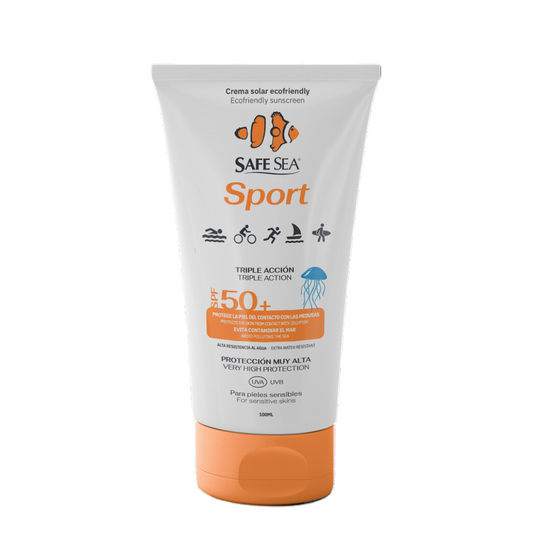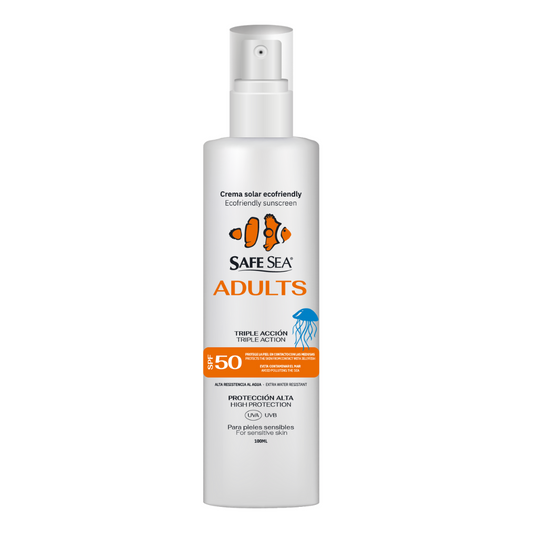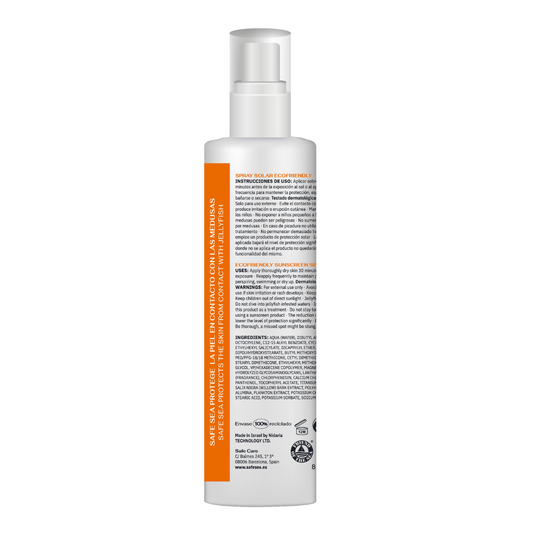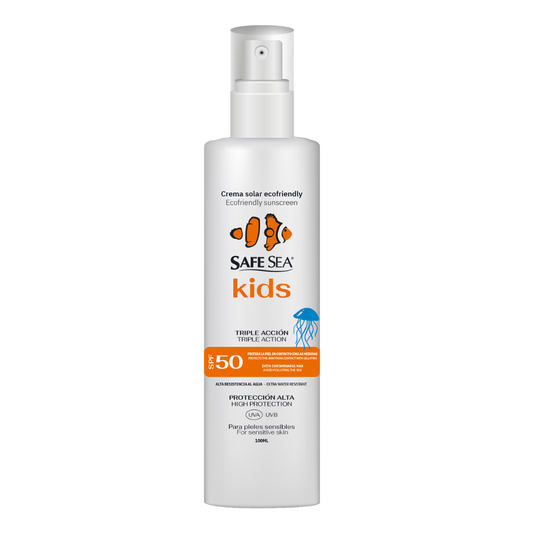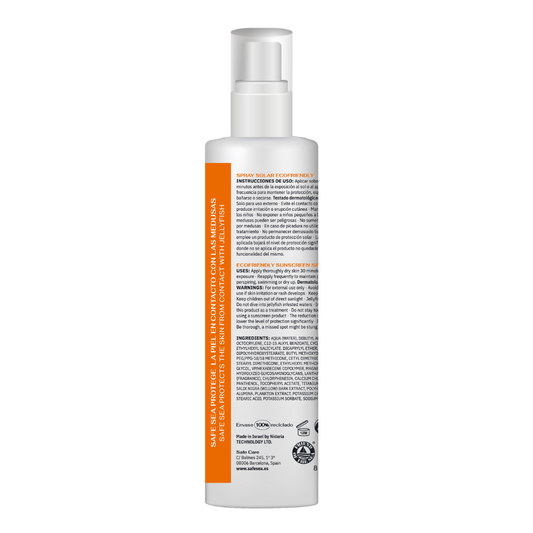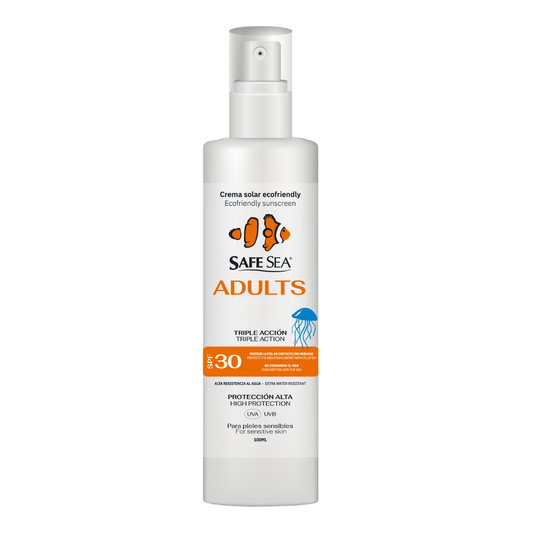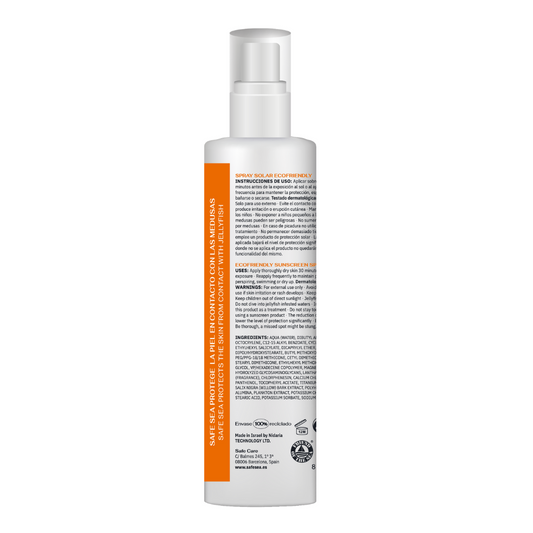
Did you know that last summer Red Cross attended 70,000 jellyfish stings? That's right. Francisco García, head of Salvamento Marítimo of Red Cross, states that during summer 2021 they attended 350,000 people. Of which, 20% were for jellyfish stings.
Summer after summer, health assistance is increasing. The arrival of these gelatinous animals to the coasts is becoming earlier and more abundant. Thus, in recent years, we can find specimens plying the Mediterranean waters from the first weeks of April until the end of September.
Pain. Intense itching. redness swelling erythema Ulceration. Necrosis. These are some of the symptoms you may suffer in case of a jellyfish sting. The severity of the "sting" depends on several factors such as: the species of jellyfish, the density of the stinging cells, the age and weight of the affected person, as well as the injured area of the body.
If you've ever won this lottery, you've probably wondered why and how a jellyfish stings. If you think about it - and with a drop of humor - it is even comical to discover how a primitive organism that acts on impulse, has the ability to catch its prey so quickly and skillfully.
How do jellyfish sting?
In reality, living waters sting, but they do not attack. They are passive beings that roam open and coastal waters, with no intention to prey. Their tentacles are made up of thousands of stinging cells (nematocysts) that, upon contact with a foreign body, release a toxic venom.
However, this ability to puncture lasts even when they are dead. Sometimes they reach the shore moribund and die there. But this does not mean that they cease to be a danger. Their defense systems are still active. Even if the filaments have broken and separated from the umbrella.
For this reason, the placement of nets to protect swimmers a hundred meters from the beach is not the solution. These same nets fracture the jellyfish and the tentacles (practically invisible) reach the shore loaded with poison.
How to treat a jellyfish sting may no longer be a concern for you.
Did you know that you can avoid jellyfish stings?
Our sunscreens also act as a jellyfish cream. They protect the skin in contact with jellyfish and prevent their sting. Please note that Safe Sea is not a jellyfish repellent.
The ingredients in a repellent keep the insects or animals in question away from our skin. Humans generally attract insects, ticks and other arthropods by the simple act of emanating heat and sweat. Perfumes and creams also help attract the attention of these animals.
To prevent these animals from remaining on our skin long enough to give the "peck", the repellent forms a barrier on the surface of our dermis. This is achieved thanks to specific active ingredients, such as DEET (N,N-Diethyl-m-toluamide), a chemical compound that confuses animal receptors and interferes with their perception of environmental odors.
The result is a kind of disorientation, as they do not know exactly where to bite. The duration of this protection varies according to the concentration of DEET used in the repellent formula.
If we are not a jellyfish repellent: how can we classify our product? Safe Sea is an inhibitor. It contains in its formula exclusive and patented ingredients, which block the sensory cells of the tentacles, just at the moment when the burning/stinging process is activated. In other words, jellyfish do come into contact with our skin, but they do not detect us as an intimidation or prey.
We must keep in mind that the venom released during contact with live water is nothing more than a natural defense mechanism for the animal, which is only activated whenever it feels threatened. Therefore, if there is no identification of threat, the sting does not occur.
Types of jellyfish and effects of their stings
There are about 4,000 types of jellyfish worldwide and the effects of their stings can vary, depending on their dangerousness. In recent years, the arrival of this gelatinous animal to our coasts has increased considerably.
Especially in the waters of the Mediterranean and the Mar Menor, what is the reason for this increase in sightings? According to experts, it is mainly due to overfishing and the consequent decrease in fish populations. Pollution and water warming are other factors that also favor the increasingly early and abundant appearance of these "brainless" fish.
Below, we detail the types of jellyfish that proliferate in the Spanish coasts and the consequences of their stings.
Cotylorhiza tuberculata
The jellyfish Cotylorhiza tuberculata belongs to the class Scyphozoa, order Rhizostomeae and family Cepheidae. It is popularly known as aguacajada, fried egg jellyfish or acalefo.
It is characterized by its peculiar morphology, in line with one of its nicknames "fried egg jellyfish". Its umbrella is flattened, yellowish brown and some greenish tones. It varies depending on the algae living inside. And with a prominent orange-brown central protrusion.
The diameter of its umbrella is 20 to 35 centimeters. It has 8 oral arms covered with appendages like small tentacles with the end in the shape of a white button.

The acalefo can be found both in open water and on the coast. They are subject to prevailing currents and winds, although it has the ability to move on its own. It is very common in the Mediterranean during summer and autumn. Especially abundant in the Mar Menor. In winter it survives as a polyp.
Are fried egg jellyfish stings dangerous? Their capacity to produce urticaria is limited, so we can conclude that their danger is low. Their tentacles are short and the density of their stinging cells is low. In case of sting, their effects are very mild, not going beyond skin irritation and itching.
Rhizostoma pulmo
Of the class Scyphozpa, order Rhizostomeae and family Rhizostomatidae. It is also known as aguamala, aguaviva, blue acalefo and white jellyfish.
The diameter of its umbrella can reach up to 100 centimeters. It is characterized by a bluish-white bell-shaped umbrella, bordered with numerous violet lobes. It has 8 oral tentacles, which form a bluish-white manubrium. In its middle part it forms a kind of crown with 16 points, from the end of which protrude 8 appendages ending in mace.

The aquamala is found in both open and shallow waters. They possess the ability to actively move towards areas of greater food. It is preferably coastal, as they need to find substrate for polyps.
This species is common in the Mediterranean and the Atlantic, from late spring to autumn. It can be seen solitary or in groups.
Its danger is medium. Although it does not produce serious dermatological symptoms, the sting of Rhizodtoma pulmo can cause irritation.
Aurelia aurita
Class Scyphozoa, order Semaeostomeae, family ulmaridae.
Its umbrella can measure up to 25 centimeters. Unlike other types of jellyfish, the Aurelia aurita, is characterized by not being perceived with the naked eye: both its size and its transparent color spotted with bluish white, make it difficult to see.
It can be found in lagoons and coastal areas and its abundance is scarce. Its meeting point in the Mediterranean is in the Mar Menor, but also in fjords and enclosed bays with input from inland waters.
Their level of danger is very low. In case of sting, the symptoms are very mild, almost inappreciable.
Chysaora hysoscella
Class Scyphozoa, order Semaeostomeae and family Pelagiidae. You have probably heard of it under the name of compass jellyfish or radiate acalephus. Its size is similar to that of Aurelia aurita, with an umbrella diameter of up to 30 centimeters.
It is yellowish white in color and on its umbrella there is a very characteristic design, reminiscent of the drawing of 16 bars open to the outside. It has 24 long and thin tentacles that can measure up to 5 meters in length. In addition, it has 4 oral tentacles fused at the base, which are generally even longer than the umbrella tentacles.

This species is common in open waters, although in summer the occasional specimen can be found on the coast, dragged by sea currents. It is relatively frequent in the Mediterranean and the Atlantic.
The sting of Chysaora hysoscella is highly dangerous. It causes itching and burning at the beginning and immediately after, erythematous and edematous skin lesions appear. Even welts may appear, which may take time to disappear.
Pelagia nocticula
Class Scyphozoa, order Semacostomeae and family Pelagiidae. Popularly known as moon jellyfish. This species is characterized by its luminescent capacity. The diameter of its umbrella can measure more than 20 centimeters. So its size is similar to that of its friends Chysaora and Aurelia.
Semi-spherical umbrella, somewhat flattened and with four long and robust oral tentacles. It has 16 marginal tentacles that can reach up to 20 meters in length (the longest seen so far).

The entire surface of the umbrella, oral arms and tentacles is covered with warts (accumulations of cnidocysts).
Its reddish-pink color makes it easy to locate. It is very common in open waters, and also in the Mediterranean coast, especially during the summer.
In terms of hazard, it is also classified as high. It causes irritation and stinging, and may leave an open wound with risk of infection. Due to its abundance and the extreme length of its tentacles, the affected area can be considerable. The effect of the venom may cause respiratory, cardiovascular and dermatological problems for weeks or even months.
Physalia physalis
Class Hydrozoa, order Siphonophora and family Physaliidae. As with the rest of the species, these names are probably not familiar to you. But the Portuguese Carabela or Physalia is. It is one of the most dangerous species, due to its morphology and toxic capacity.
Its external morphology shows a floating part (pneumatophore), formed by a float filled with gas, purplish and transparent and with a crest (similar to a sail) in its upper part that facilitates its displacements in the wind.

Its suspended part is formed by a multitude of long and thin tentacles, in charge of capturing prey and defense. They are loaded with nematocysts (stinging cells) that hang several meters below the water. As a curious fact: these tentacles can reach more than 20 meters in length.
This type of jellyfish moves at the mercy of surface currents and wind. It frequents the Atlantic, but in recent summers it has also been observed on Mediterranean coasts, in search of warm waters.
The danger of the Portuguese jellyfish is very high. So much so that contact with its tentacles can cause very serious consequences for people. It is considered the most dangerous jellyfish in the world. They contain innumerable nematocysts with neurotoxic, cytotoxic and cardiotoxic properties that can cause neurogenic shock. An intense pain takes over our body and can even cause drowning.
Velella velella
Class Hydromedusae, order Hydroida and family Velellidae.
Known as "sailboat jellyfish" because of its peculiar shape. It is one of the smallest and most inoffensive species in the Mediterranean. It measures between 1 and 8 centimeters. It is a modified hydrozoan with a round disc that encloses the float and contains a horny skeleton equipped with a sail, covered with a white fabric. It rises from the surface of the water to catch the wind and aid dispersal.
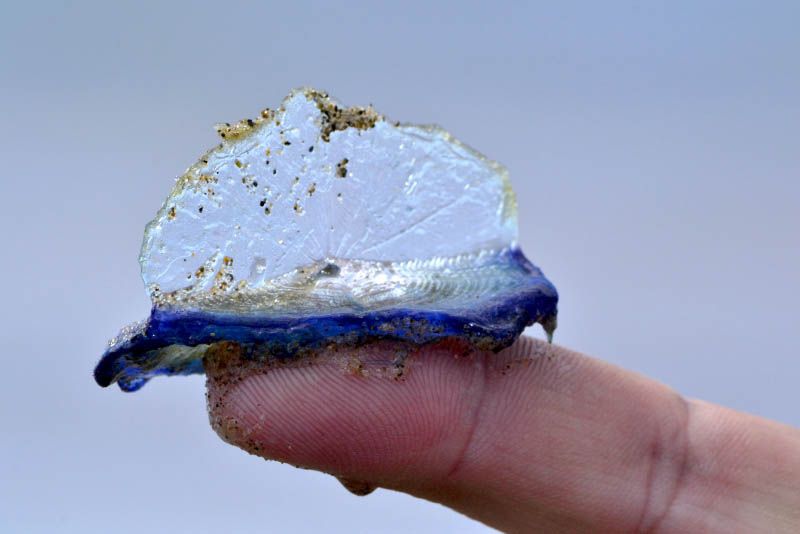
Unlike the rest of the specimens, they appear in swarms. They are more frequent in spring. They pose no threat to humans, since the effects of their sting are imperceptible.
Carydbea marsupialis
Class Cubozoa, order Carybdeida and family Carybdeidae. Popularly known as "sea wasp jellyfish", "cube jellyfish" and/or "Australian jellyfish".
On the surface, apparently harmless. They are small transparent jellyfish with a tiny disc diameter of 5 to 6 centimeters. However, its long tentacles loaded with nematocysts define it as one of the most venomous jellyfish.
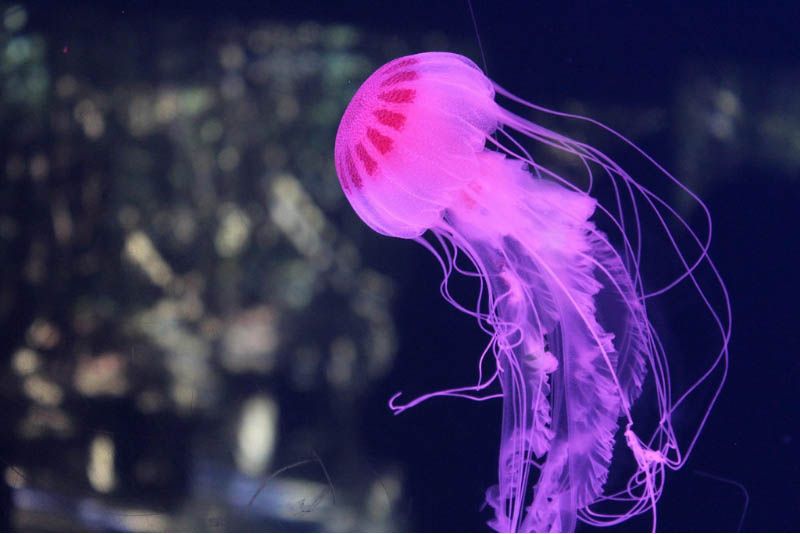
Cyanea capillata
Under this scientific name is the world's largest jellyfish: Arctic lion's mane.
The diameter of their bell varies from 30 cm to 2 meters. The peculiarity of this species is that they are capable of developing tentacles with a length of more than 30 meters. They usually have a large number of sticky tentacles grouped in each of the lobes of the bell. Their common name is due to the resemblance of the tentacles' appearance to the mane of a lion. You can see it in the following picture.
The lion's mane jellyfish lives in cold marine waters. It can be found in the Arctic Ocean and in northern regions of both the Atlantic (Canada and USA) and the Pacific.

Turritopsis nutricula
Known as the "immortal jellyfish". Although it may seem like a myth, science itself considers it to be the only living being that has reached eternal life, since it is capable of reversing its life cycle. That is, when it reaches maturity, it has the ability to return to its original form (polyp) to become an adult again. Most fascinating of all, it can repeat the process as many times as it wants: a totally mysterious, but real loop.
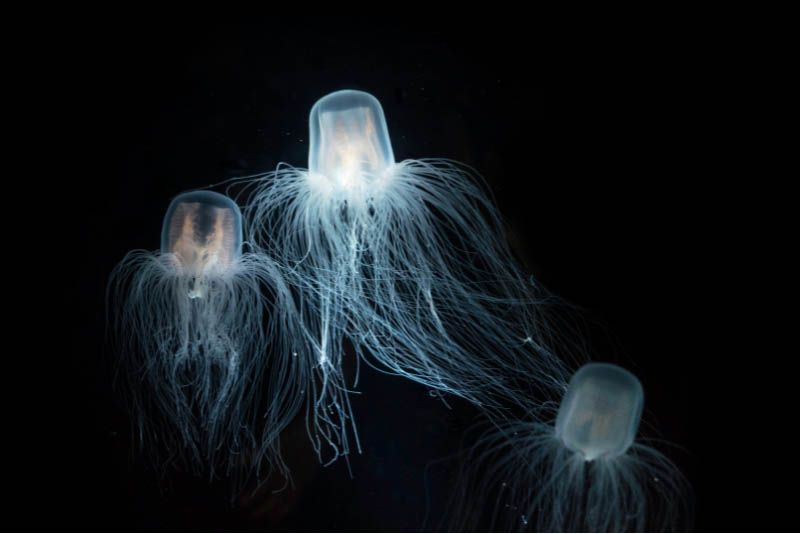
It belongs to the species of Hydrozoa hydroidea of the Oceanidae family. It is native to the Caribbean Sea, but it is already reproducing all over the world. Can you imagine the reason for this proliferation? They are the ballast tanks of ships, which are filled in the Caribbean Sea itself and move throughout the rest of the ocean waters.
Their appearance is almost imperceptible. These marine creatures are tiny: young specimens barely reach a millimeter in diameter. Like other species described above, their body is gelatinous and transparent. The only distinguishing feature is their stomach, which is bright orange in color. Depending on its evolutionary stage, the Turritopsis jellyfish can have from 8 to 80 tentacles.
Have you ever seen any of these jellyfish? And more importantly, have you been stung? Leave us a comment and tell us about your experience.



